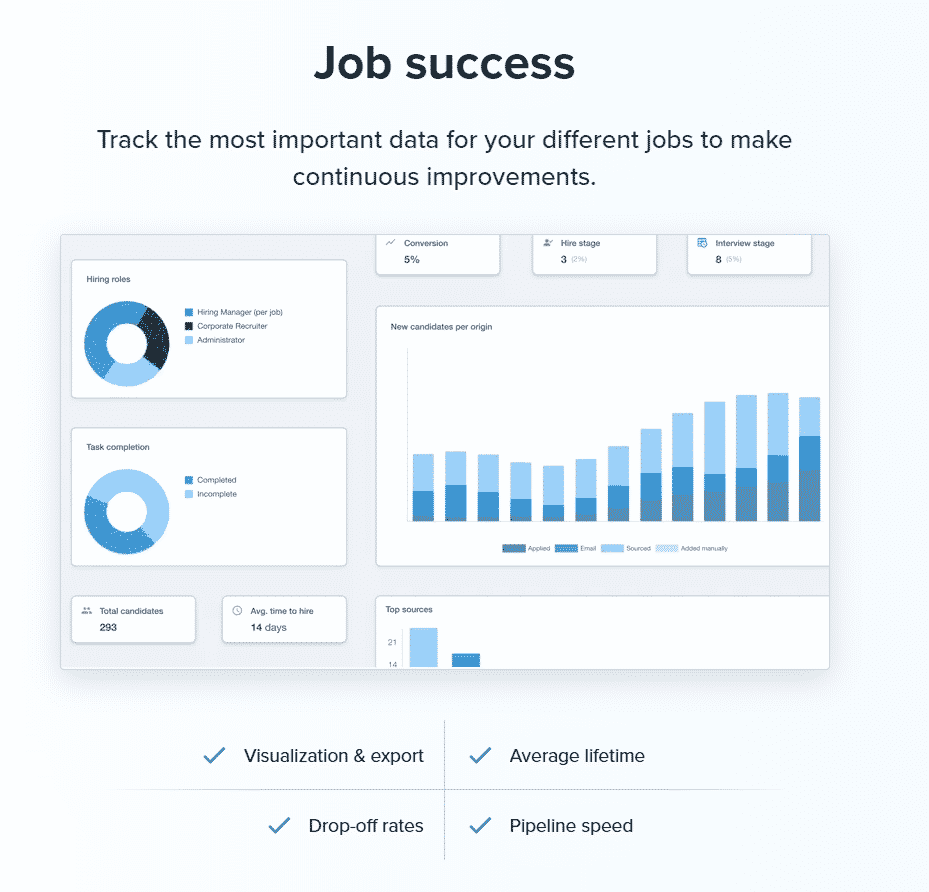Being able to source the best talent within the shortest time possible is every recruiters’ dream. But it is just that - a dream. Reality, inevitably, kicks in. The recruiting process takes longer than expected and great talent isn’t so easy to find these days. But you can make that vision much more realistic by implementing and practicing a candidate relationship management strategy.

Modern recruiters understand that sourcing talent to fill open vacancies is no longer a one-off project. It doesn’t end when a candidate is hired. When we approach recruitment this way, time constraints often lead to hit-and-miss efforts where there aren’t any winners.
Just think of how many potentially good hires can fall through the cracks. Also, imagine how many worthy applicants are left frustrated and disappointed by either a blunt generic response to their application or no response at all.
Candidate relationship management definition
The definition of candidate relationship management is the practice of encouraging and nurturing candidates into a company’s talent pipeline. It also helps to enhance the candidate experience.
A solid candidate relationship management strategy will maintain strong, positive relationships between employers and potential candidates in the talent pool. If implemented accurately, these candidates will hop out of the pool and into the hiring process with more ease and at a less time-consuming rate.
What’s the purpose of candidate relationship management?
The purpose of candidate relationship management is to set an initial tone for candidates and show them what life will be like when they become employees. If done correctly, it heightens enthusiasm and engagement and positively impacts the candidate experience. It’s a chance for organizations to ‘sell themselves’ to attractive candidates, fill their talent pools with potential hirers, and broaden the brand’s positive reputation.
Having a candidate relationship management strategy is essential
Devising a strategy that aligns with your recruitment and selection process is vital so that it can be easily managed through your ATS. Your ATS’s reporting should allow you to track the success of your candidate management strategy daily. Tracking and analyzing real-time data gives you the control to adapt and optimize your approach as needed.

Today, recruiters are just as responsible for selling and marketing the company as an employer of choice as they are for filling open vacancies. Candidate relationship management has taken a leaf out of sales and marketing’s book and exported it into the recruitment process.
Candidate relationship management aims to build a talent pool of candidates who have the skills, experience, and personal traits that your company needs. Having a database of suitable candidates who have indicated that they’re keen to join your company is a potent tool.
Being able to move pre-qualified candidates into the talent pipeline is also a massive time saver. Recruiters don’t have to screen loads of applications, and with fewer applications, there are fewer disappointed candidates.
But remember, to build a strong talent pool your talent sourcing efforts must be ongoing - just like all marketing activities.
What’s the difference between ATS and CRM?
Is an ATS (applicant tracking system) and a CRM (candidate relationship management system) the same thing?
There’s understandably some confusion here. But, the answer is simple: no, an ATS and a CRM are not the same things. They’re different. And you need both.
Firstly, an ATS is a type of recruiting software that aids with and strengthens your hiring process. Recruiters and hirers can work together to create and post vacancies, organize and collect the applications, and screen, determine, and move candidates through each stage of the hiring process.
A CRM, however, is used to strengthen relationships between the organization and its recruiters and candidates for future vacancies. CRMs are a part of the recruitment marketing strategy, with an overall aim of nurturing and building solid relationships with candidates over time. When a role comes up, the recruiters and employers already have an engaged, enthusiastic, and ready-to-go pool of candidates to pick from.
4 Essentials of candidate relationship management
Since the purpose of candidate relationship management is to create a talent pool of quality candidates, it’s essential to identify the type of people your company will need in the future.
When that’s done, you can begin to develop different campaigns that will appeal to the various types of candidates you want to engage. Skills and expectations come in different levels and what might appeal to one level can appear frivolous to another. If a candidate thinks that your interactions with them are time-wasting, they’ll disengage and be lost to you.
Bear in mind, too, that managing your candidate relationships is all about the candidate experience. Everything you implement must be candidate-centric. Although the content and the approach of each campaign may differ, these four essentials must be included in your candidate relationship management strategy:
1. A careers site
You must have a strong careers site that’s not only updated continuously but also provides valuable information about your company. A career site is one of the most important tools to promote your employer brand. The site must portray your company as an employer of choice because this is where candidates will go for information.
In addition to listing open vacancies and company details, include some videos about your products, services, and customers. You can also feature clips of employees explaining why they are happy working for the company. Who better to promote your employer brand than cheerful employees in a video?
Don’t forget to include your company values and vision either. That’s becoming more and more important to people when they decide where they want to work. And remember to remove vacancies that are filled or still pending. Telling applicants that an advertised job is no longer open will dent your brand because you’ll come across as insincere or possibly even deceptive.
2. Good communication across platforms
Managing your candidate relationships relies on ongoing communication and active engagement. How you choose to communicate relies on your company and their overall recruitment strategy. The following are the most commonly used platforms of communication:
Social media
Social media that’s linked to your careers site and shares valuable content is imperative to success. Regular engagement on social media platforms is also crucial. There’s no value in posting to social media if you’re not going to respond to comments and questions. Ignoring people on social media will open your employer brand up to negative shares and mentions as followers vent their frustration online.
Another reason to have a strong social media presence is that once integrated with your ATS, your ATS can move profiles from social media into your candidate database.
Job boards
Job boards are an invaluable resource to any recruiter, but make sure that your employer brand is well presented. Detailed job posts, corporate branding, company information, and links to social media will give the right impression.
Emails
Email communication is just as important, but make sure that you’ve confirmed beforehand that candidates opt-in to receive messages from you. Email content must be short and concise as well as relevant to the level of the candidate. If you want to share detailed information, include a link. Nobody wants to be confronted by a wall of text.
Also, ensure that your campaigns are infrequent and that they encourage people to follow you on social media where you can post more often. Email campaigns sent out too regularly can come across as spam, and you don’t want a reputation for spamming people.
Always reply to all responses to your email campaigns if you want to uphold your employer brand standards. Prompt and genuine interaction with applicants and candidates across all platforms is essential to promote your employer brand.
Up to 58% of candidates won’t apply to a company again if they’ve previously had a bad experience, and being ignored is definitely a bad experience.
3. Track data analytics daily
Even if your candidate relationship management seems to be working well and your candidate pool is growing, how do you measure the value?
Data analytics tell you in real-time whether your candidate pool has value. Accumulating a lot of data is easy, but unless candidates are moving from the talent pool into the hiring pipeline regularly, you’re wasting your time.
A successful candidate relationship strategy will result in a high conversion rate of passive candidates in your talent pool converting to successful hires.
4. Employee engagement
Often overlooked, but employee engagement is a vital component of managing your candidate relationships. Statistics show that only 36% of companies currently monitor employee engagement regularly. By keeping existing employees in the loop of all hiring activities, you encourage internal applications and promotions. You also open up to referrals from employees.

Referrals are an excellent means to add to your talent pool. Remember, employees know the company process and standards. They’re unlikely to recommend anyone who’d be a poor fit. Also, employees who refer people to the company are promoting the employer’s brand. This showcases that they’re happy and productive employees. It’s a win-win for your current employees, new candidates, and you, as an employer.
Candidate relationship management has real value
Candidate relationship management allows you to keep people interested in your employer brand even if you don’t have a suitable job for them right now. This is a critical tool to have and use in the hiring process. It substantially reduces your time to hire rate and improves the quality of hires.
Worldwide, there’s a lingering skills shortage with 89% of hiring managers expecting to encounter staff shortages in the future, particularly in technology. Combine that with the fact that 75% of passive candidates will consider changing jobs if the right position comes their way.
Your talent pool is an invaluable resource if managed well. It holds top talent that you’ll never find if you go the route of only looking at candidates who respond to your job adverts.
No recruitment process can be successful without the implementation of a data-driven candidate relationship management strategy to complement it.







